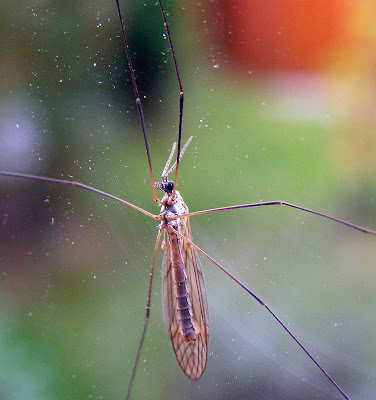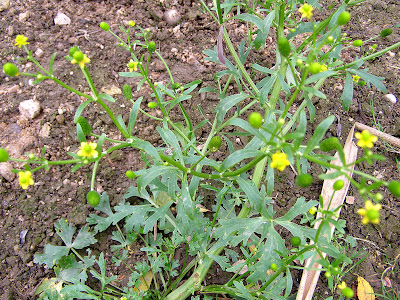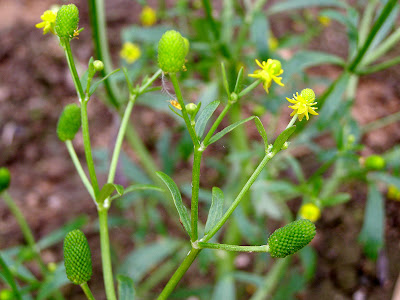With the arrival of November and having managed to come through the onslaught of Hallow e'en unscathed, time for a look at another familiar Autumn visitor. Crane Flies or 'Daddy Long Legs' (Tipula sp.). This one was 'snapped' while clinging to our window.
There are well in excess of 1000 species of Tipula throughout the world and we have many different ones in Britain. they start to appear all over the place in the shortening days of Autumn as they emerge from the ground and start to flutter clumsily around the lawn. Attracted to the lights of our living rooms, they are often to be found trying to get in at windows. Their long, fragile legs give them their rather apt common name. Looking closely at them, you can see a pair of 'drum-stick' - like appendages immediately behind their wings. These are called Halteres and are found on many different species of fly. They flap up and down in opposition to the actual wings and are in fact developed from the second pair of wings which can still be seen in some insects, such as Dragonflies. Their principal use is to act as 'vibrating structure gyroscopes' maintaining stability in flight and enabling the fly to make directional changes without stalling, wobbling or simply falling out of the sky. Quite remarkable.
Changing tack completely, I manged to tick off another plant species new to me the other day. Called Celery-leaved Buttercups (Ranunculus sceleratus) they were to be found growing around Straw's Bridge pond.
Related to the other, more familiar Buttercups, they share that family's toxicity and are poisonous to grazing animals when eaten fresh.
The name Ranunculus is Latin for "little frog". This probably refers to many species being found near water, like frogs.
Strangely, we get the word 'Sardonic' - meaning bitter or scornful - from these plants, deriving from the name of the Sardinian plant Ranunculus sardous. When eaten, it would cause the eater's face to contort in a look resembling scorn (generally followed by death).



No comments:
Post a Comment